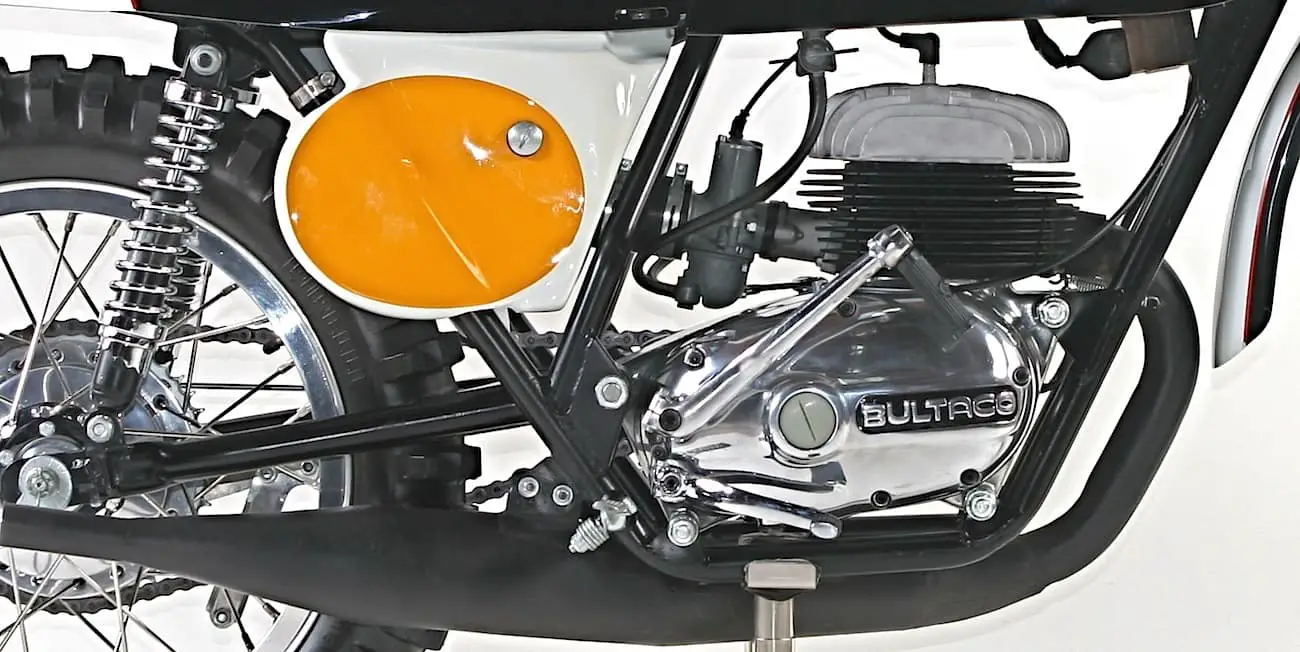CLASSIC MOTOCROSS IRON: 1968 BULTACO 360 EL BANDIDO
CLASSIC MOTOCROSS IRON: 1968 BULTACO 360 EL BANDIDO
By Tom White
By the late 1960’s, many of the European motocross manufacturers had started building larger-bore two-stroke machines to compete in the premier 500cc class. The British four-stroke machines were no longer omnipotent in motocross, and the Czechoslovakian CZ brand had been first to capitalize on the booming two-stroke market with the twin-port CZ360. Factory CZ rider Paul Friedrichs rewarded them with 500cc World Motocross Cham?pionships in 1966, ’67 and ’68.
The Spanish Bultaco factory introduced its first Open class machine in 1967 with the 350cc El Bandido. In 1968, the bore was increased from 83.2mm to 85mm to up the displacement to 362cc (with 43.5 horsepower). Therein lies the problem! Weighing in at 251 pounds, some 20 pounds heavier than the 250 Pursang, and with almost ten more horsepower, very few riders were capable of taming the Bandit!

Spanish metal was often blamed for the poor reliability of Spanish brands like Bultaco, Ossa and Montesa, and that problem was only exacerbated with the big-bore El Bandido. The machine also used a Femsatronic ignition that would prove to be unreliable.
The Bandido was available in both motocross and scrambles models. In America, the scrambles model sold better because the longish wheelbase (55.9 inch), 31-degree head angle, and ample power were better suited to smoother scrambles tracks. Largely ignored by vintage racers, the El Bandido has become a very desirable collector bike.
1968 EL BANDIDO FACTS
WHAT THEY COST
Reliability problems. Spanish metal. Never very popular. All reasons why most El Bandidos ended up in junk yards. It is extremely difficult to find a good core to restore. Expect to pay $3000 to $4000 for a decent core. A well restored example is worth $10,000.
MODELS
There were two models: the El Bandido Mk 2 360 Scrambles and Mk 2 360 Motocross.
WHAT TO LOOK FOR
Stock is best, and the motocross model is more valuable than the scrambles model. Look for original Betor forks and shocks, Akront alloy rims (21-inch front on MX model), 32mm Amal Concentric carb, and original Femsatronic ignition. Details like the standard grips with thumbs up logo and original Pirelli tires would be a bonus. Don’t worry about the fiberglass, as good replica copies are available.
For more info on classic bikes go to www.earlyyearsofmx.com







Comments are closed.